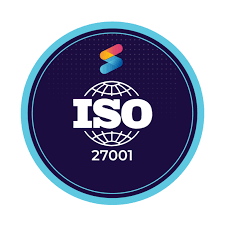When it comes to maintaining a robust information security management system (ISMS), the ISO 27001 Internal Audit is an essential tool in your arsenal. It is designed to provide a systematic approach to assess and improve processes, and ensure they align with your organization’s information security goals. In this post, we’ll unravel the steps involved in the ISO 27001 Internal Audit process, its requirements, and estimated timeline.
The Importance of ISO 27001 Internal Audit:
The ISO 27001 Internal Audit is not just about ticking boxes; it’s a proactive measure to protect your organization’s data and manage potential risks. By regularly conducting internal audits, your organization can promptly identify and rectify vulnerabilities, maintain compliance, and enhance its overall security posture.
ISO 27001 Internal Audit Requirements:
There are key requirements set by ISO 27001 for conducting internal audits:
- Independence: The internal auditor should not audit their own work to maintain objectivity. This requirement often necessitates external auditors or employees from different departments to conduct the audit.
- Competence: The auditor should have appropriate knowledge and skills to effectively carry out the audit. This could be demonstrated through certifications, experience, or training.
- Documented Information: The audit process and its results should be documented and reported to top management.
- Follow-Up: Any non-conformities identified should be addressed promptly, and follow-up audits should be conducted to ensure the effectiveness of the actions taken.
The ISO 27001 Internal Audit Process:
The ISO 27001 internal audit is generally broken down into four stages:
- Planning: Identify what areas or processes will be audited, define the audit criteria, and prepare an audit checklist.
- Execution: Conduct the audit by collecting evidence through interviews, observation, and reviewing documents.
- Reporting: Document the findings of the audit, including any non-conformities, and present them to management.
- Follow-up: Ensure the implementation of corrective actions and check their effectiveness in follow-up audits.
Timeline for an ISO 27001 Internal Audit:
The timeline for an internal audit can vary significantly based on the size and complexity of your ISMS, and how well it’s been maintained. A small organization with a well-maintained ISMS could complete the process in a few weeks. However, for larger organizations, or those with significant non-conformities, it could take a few months.
The ISO 27001 Internal Audit is a cornerstone in ensuring a secure and reliable ISMS. While it might appear daunting initially, understanding the process, requirements, and timeline can make the journey easier. Remember, internal audits aren’t about catching mistakes; they’re about improving processes and ensuring the security of your organization’s information.
Frequently Asked Questions:
- What is an ISO 27001 Internal Audit? An ISO 27001 Internal Audit is a systematic evaluation of an organization’s Information Security Management System (ISMS) in accordance with the requirements of the ISO 27001 standard. It helps identify any discrepancies or areas of improvement in the ISMS.
- Who should conduct the ISO 27001 Internal Audit? The ISO 27001 Internal Audit should ideally be conducted by a qualified individual who is not directly responsible for the processes being audited, to maintain objectivity. This can be an internal employee from a different department or an external auditor.
- How often should ISO 27001 Internal Audits be conducted? Although the ISO 27001 standard doesn’t prescribe a specific timeline, it is generally recommended to conduct internal audits at least once a year. However, the frequency can vary depending on the size and complexity of the organization and its ISMS.
- What happens if non-conformities are identified during the audit? Any non-conformities identified during the audit need to be addressed promptly. Corrective actions should be taken to eliminate the cause of the non-conformities and avoid their recurrence. A follow-up audit should be conducted to ensure the effectiveness of these actions.
- How long does an ISO 27001 Internal Audit take? The timeline for an ISO 27001 Internal Audit can vary significantly depending on the size and complexity of the organization’s ISMS and the scope of the audit. For smaller organizations with a well-maintained ISMS, the process could take a few weeks, while larger organizations might require a few months.
- What should I do to prepare for an ISO 27001 Internal Audit? Preparation for an ISO 27001 Internal Audit includes understanding the ISO 27001 standard requirements, maintaining proper documentation of all processes, training employees about ISMS, and conducting regular internal reviews.
- What is the difference between an internal audit and a certification audit? An internal audit is conducted by the organization itself (or an appointed representative) to assess the effectiveness of the ISMS and identify areas for improvement. A certification audit, on the other hand, is conducted by an independent, external auditing body to determine if the organization’s ISMS meets the requirements for ISO 27001 certification.
At Prodigy 13 we can help you achieve 100% compliance with ISO 27001, PCI DSS, SOC 2, and HIPAA. For more information and for free compliance assessment, please review our ISO 27001 Audit Readiness service, or simply get a Quick Quote.
Related articles: ISO 27001 Certification Process, Annex A, ISO 27001 Policies



